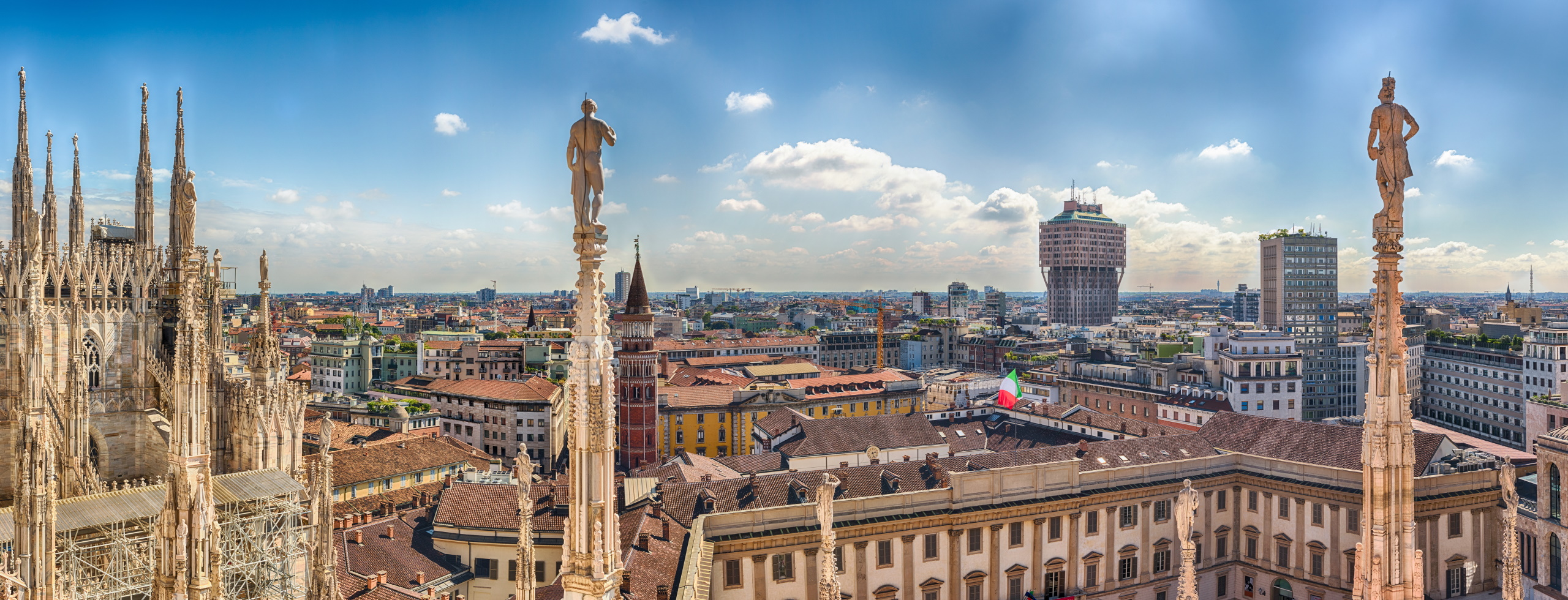-
Destinations
All Destinations
We'll craft an unsurpassed vacation just for you.
All you'll have to do is land
Choose your destination
- Pick your Trip
-
 Build your True Trip
Build your True Trip
- How It Works
- Blog
-

A Guide to Milan
by TrueTrips
- 1
MILAN THROUGH THE CENTURIES
The Celtic Insubri were the first who settled in Milan and its surrounding area in the beginning of the 4th century BC. Exactly what they called their settlement is in some dispute, but when the Romans conquered it in 222 BC they named it Mediolanum.
Milan grew and prospered under the Romans and in 286 AD, when Emperor Diocletian decided to divide the Roman Empire in half, he made Milan the capital of the western part and installed Maximian as its ruler. Both Diocletian and Maximian abdicated their thrones in 306 AD. Then, following a series of wars of succession, Constantine and Licinius became co-emperors of the Roman Empire. In 313, they issued the Edict of Milan effectively ending the persecution of Christians and acknowledging their right to exercise their religion. Emperor Constantine assumed rule over both parts of the empire in 324 and created a new capital for his unified empire in 330 the famed city of Constantinople. In 395, the empire was split in half once again. Constantinople remained the capital of the East Roman Empire while Milan became the seat of the West Roman Empire the Visigoths besieged the city in 402, resulting in the imperial residence moving to Ravenna. The ensuing centuries were a tumultuous period for Milan. The city was ransacked by Attila the Hun in 452, conquered by the Ostrogoths in 539 and then again by a Germanic tribe, known as the Lombards, in 569 before being surrendered to Charlemagne and the Franks in 774.
Milan grew and prospered under the Romans and in 286 AD, when Emperor Diocletian decided to divide the Roman Empire in half, he made Milan the capital of the western part and installed Maximian as its ruler. Both Diocletian and Maximian abdicated their thrones in 306 AD. Then, following a series of wars of succession, Constantine and Licinius became co-emperors of the Roman Empire. In 313, they issued the Edict of Milan effectively ending the persecution of Christians and acknowledging their right to exercise their religion. Emperor Constantine assumed rule over both parts of the empire in 324 and created a new capital for his unified empire in 330 the famed city of Constantinople. In 395, the empire was split in half once again. Constantinople remained the capital of the East Roman Empire while Milan became the seat of the West Roman Empire the Visigoths besieged the city in 402, resulting in the imperial residence moving to Ravenna. The ensuing centuries were a tumultuous period for Milan. The city was ransacked by Attila the Hun in 452, conquered by the Ostrogoths in 539 and then again by a Germanic tribe, known as the Lombards, in 569 before being surrendered to Charlemagne and the Franks in 774.
This by no means ended the conflicts and violence that marked Milan’s history during the next 500 years, as various families and factions contended for rule of the city. By the end of the 1200s, the Visconti family assumed control and held power until the last of its line died in 1447. The French laid claim to Milan in 1492 but in 1525, the city, along with much of northern Italy, fell to the House of Hapsburg – first to its Spanish line and then in 1713 to the Austrian Hapsburg line – before joining the newly formed Kingdom of Italy in 1861.
In the years since the end of World War II, Milan has experienced some extraordinary developments. Its population swelled to some 8 million people and the downtown center of the city, in recovering from the devastation of the war, saw the erection of skyscrapers and other modern buildings. Then, as some of the older types of manufacturing began to decline, Milan found itself adopted by high-end fashion houses, modern furniture designers, publishers, and new information technology firms. By all accounts, today’s Milan is a fascinating city, one that provides a special exposure to contemporary Italy along with a unique glimpse into the country’s past.
In the years since the end of World War II, Milan has experienced some extraordinary developments. Its population swelled to some 8 million people and the downtown center of the city, in recovering from the devastation of the war, saw the erection of skyscrapers and other modern buildings. Then, as some of the older types of manufacturing began to decline, Milan found itself adopted by high-end fashion houses, modern furniture designers, publishers, and new information technology firms. By all accounts, today’s Milan is a fascinating city, one that provides a special exposure to contemporary Italy along with a unique glimpse into the country’s past.
